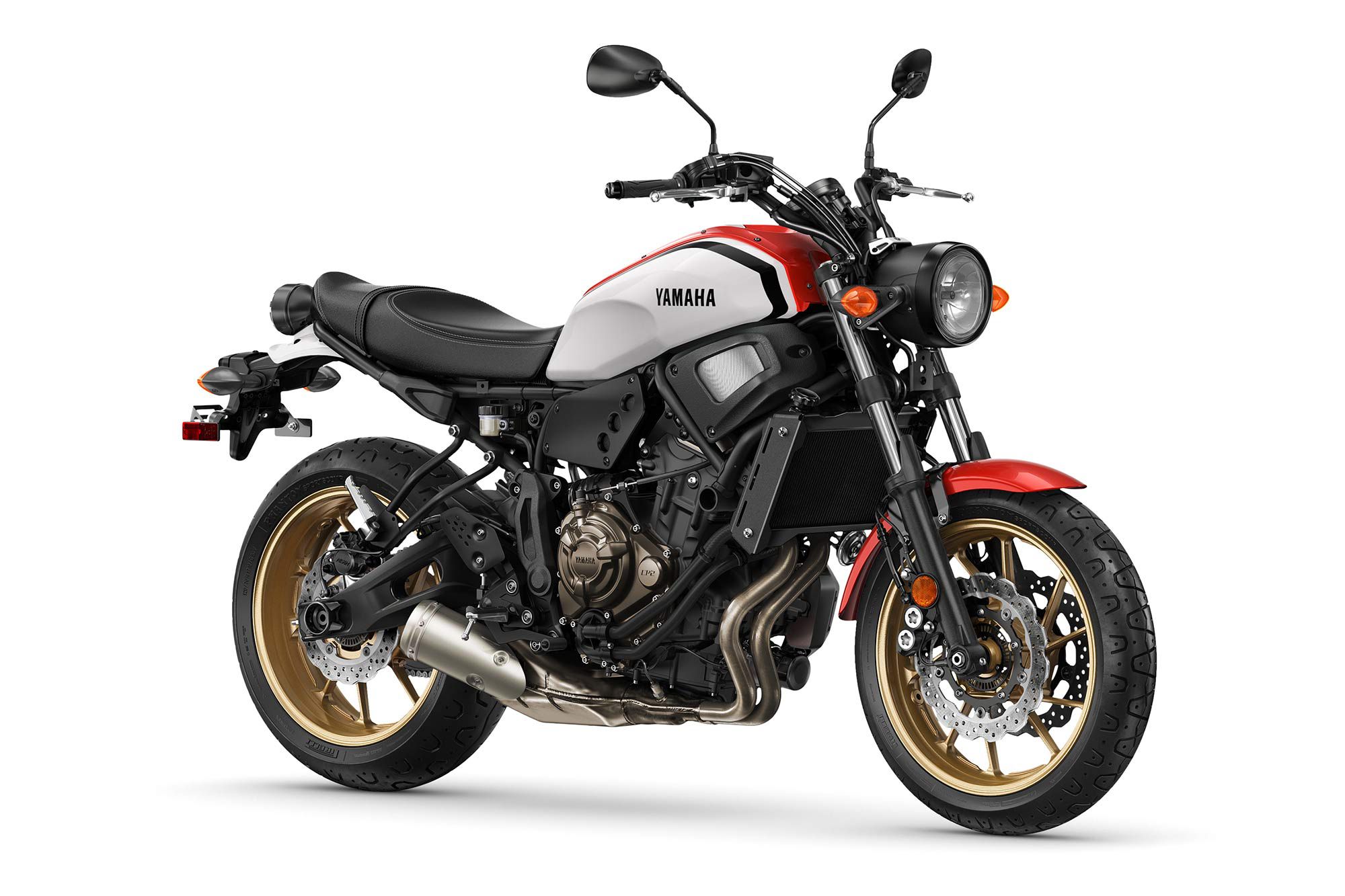
Ups
- Same chassis and engine as previous-generation MT-07
- Wicked retro styling
- Fairly comfy ergonomics
Downs
- Seat foam too soft
- Numb front brake feel
- $800 more expensive than MT-07
Verdict
The XSR700 brings retro style along with near-identical performance to the previous generation MT-07 it’s based upon, plus more relaxed ergos. You’ll be paying an $800 premium for it, though.
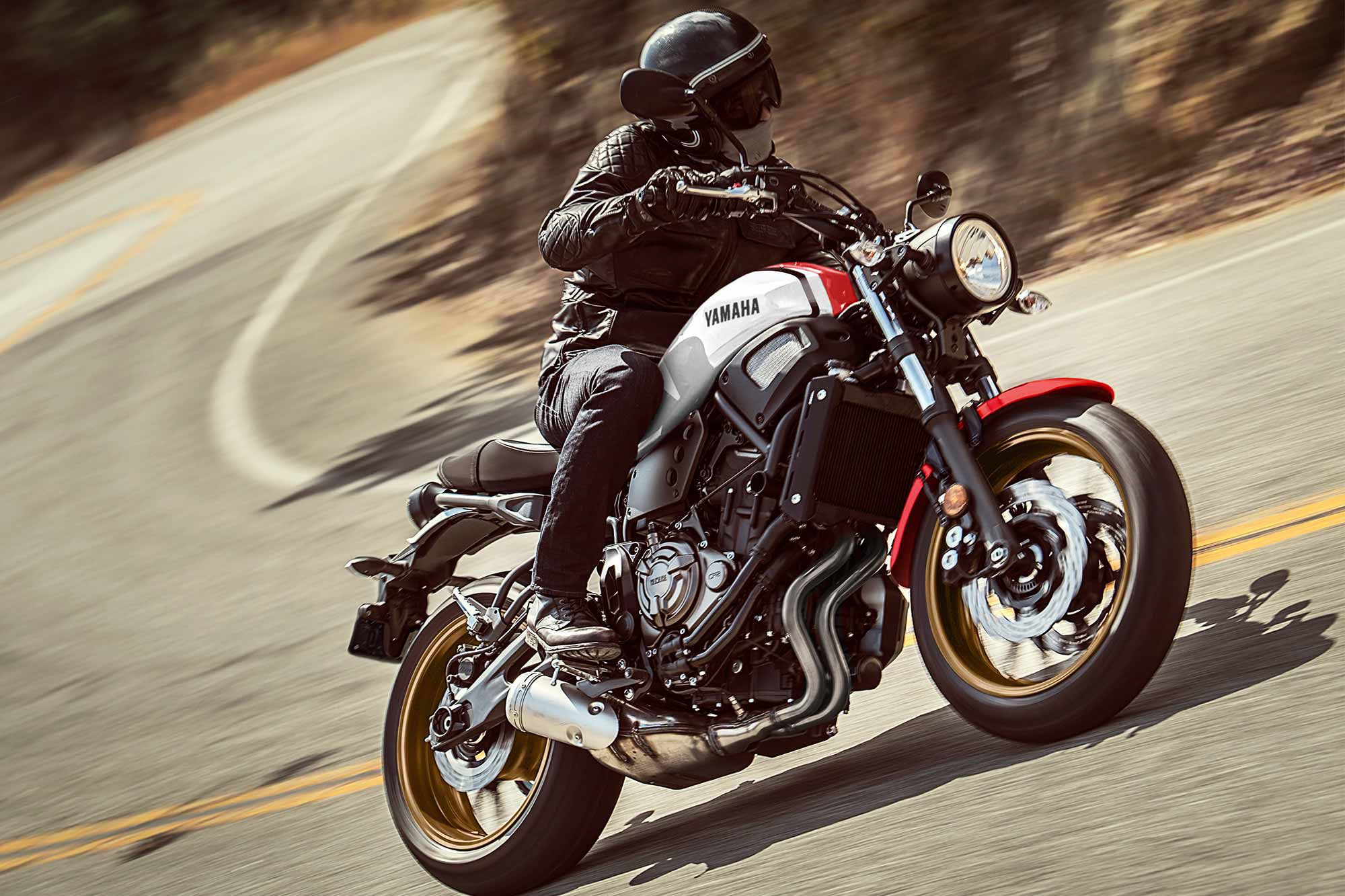
Overview
Like its big brother XSR900, the XSR700 combines retro classic/heritage styling with the excellent performance of its naked bike cousin (in the XSR700′s case, the best-selling MT-07). Unlike the XSR900, however, American enthusiasts had to wait two years before the smaller XSR finally hit US dealerships in 2018. Utilizing the same parallel-twin engine as the previous-generation MT-07 (the 2021 MT-07 has some engine updates) and diamond-type tubular steel frame, the XSR700 has the same twisty-road abilities but with more relaxed ergos courtesy of its taller handlebar and large one-piece seat.
Updates for 2021
There are no updates for 2021 to the XSR700. Available colorway is Radical White/Rapid Red.
Pricing and Variants
The 2021 XSR700 retails for $8,499.
Competition
The XSR700′s main competitors are the Honda CB650R, Royal Enfield INT650 and Continental GT, Kawasaki W800 and Z650 (plus the new 2022 Z650RS), Suzuki SV650X, and Triumph Trident 660.
Powertrain: Engine, Transmission, and Performance
The XSR uses the exact same 689cc DOHC parallel twin as last year’s last year’s MT-07. When we put a 2018 model XSR700 on the Cycle World dyno (the engine has remained the same since then), we saw 67.91 hp at 8,790 rpm and 47.47 pound-feet of torque at 6,490 rpm. This engine uses a unique 270-degree crankshaft firing order that provides a torquey yet revvy character very unlike most parallel-twin engines. CW’s Michael Gilbert said in his 2018 XSR700 First Ride story: “Pointing the front wheel skyward under hard acceleration is no problem. The XSR really takes off around 5,500 rpm, and the strong delivery only tapers off near redline.” There is no slipper clutch, as noted by Zack Courts in his MC Commute video of the XSR700, so you’ll need to pay attention to your downshifts.
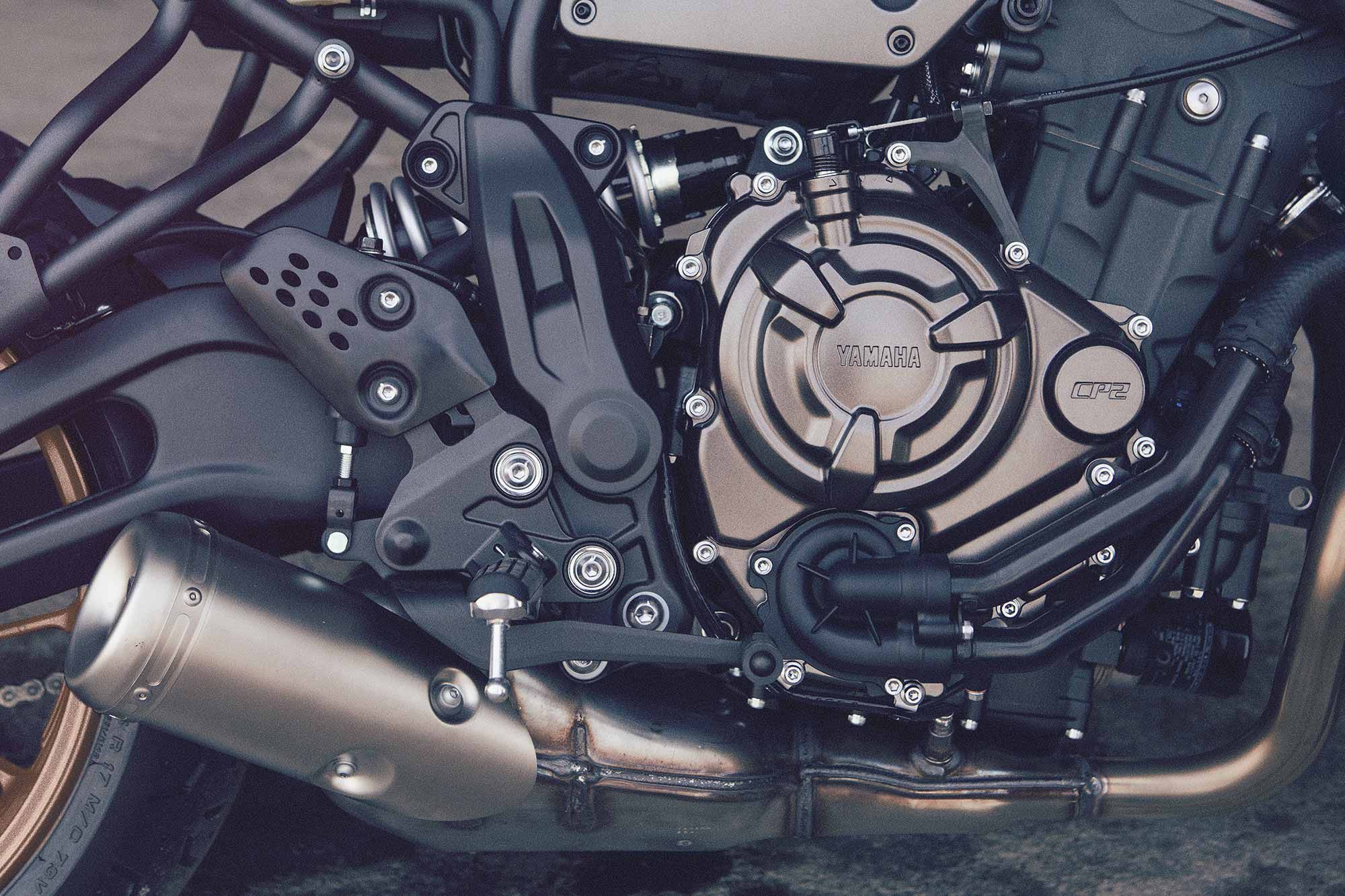
Handling
The spring and damping rates in the 41mm conventional KYB fork and single rear shock have been stiffened up slightly over the previous-generation FZ-07 (which became the MT-07 in 2018 with the same stiffer suspension rates), and sport grippy Pirelli Phantom SportComp tires on both ends. The XSR700′s handling has a planted and confidence-inspiring feel, while still remaining light and agile without being nervous.
Brakes
Four-piston Advics Monoblock calipers biting on 282mm discs up front provide excellent stopping power, although feel at the lever is lacking when braking hard. ABS is standard on the XSR700, and intervention can be felt only when aggressively braking at slow speeds.
Fuel Economy and Real-World MPG
Yamaha is claiming 53 mpg for the XSR700.
Ergonomics: Comfort and Utility
The one-piece saddle is much taller than the FZ/MT-07′s separate seat (32.9 inches versus 31.7 inches), along with a taller and wider (3 inches) handlebar, so the riding position is much more relaxed. Unfortunately most of our testers found the seat cushion foam to be too mushy, resulting in discomfort after 30 minutes in the saddle. Passengers will definitely be happier on the XSR700 than the FZ/MT, as there’s much more padding and the seat is far wider. That tall seat height might be a deal breaker for some riders (especially new ones).
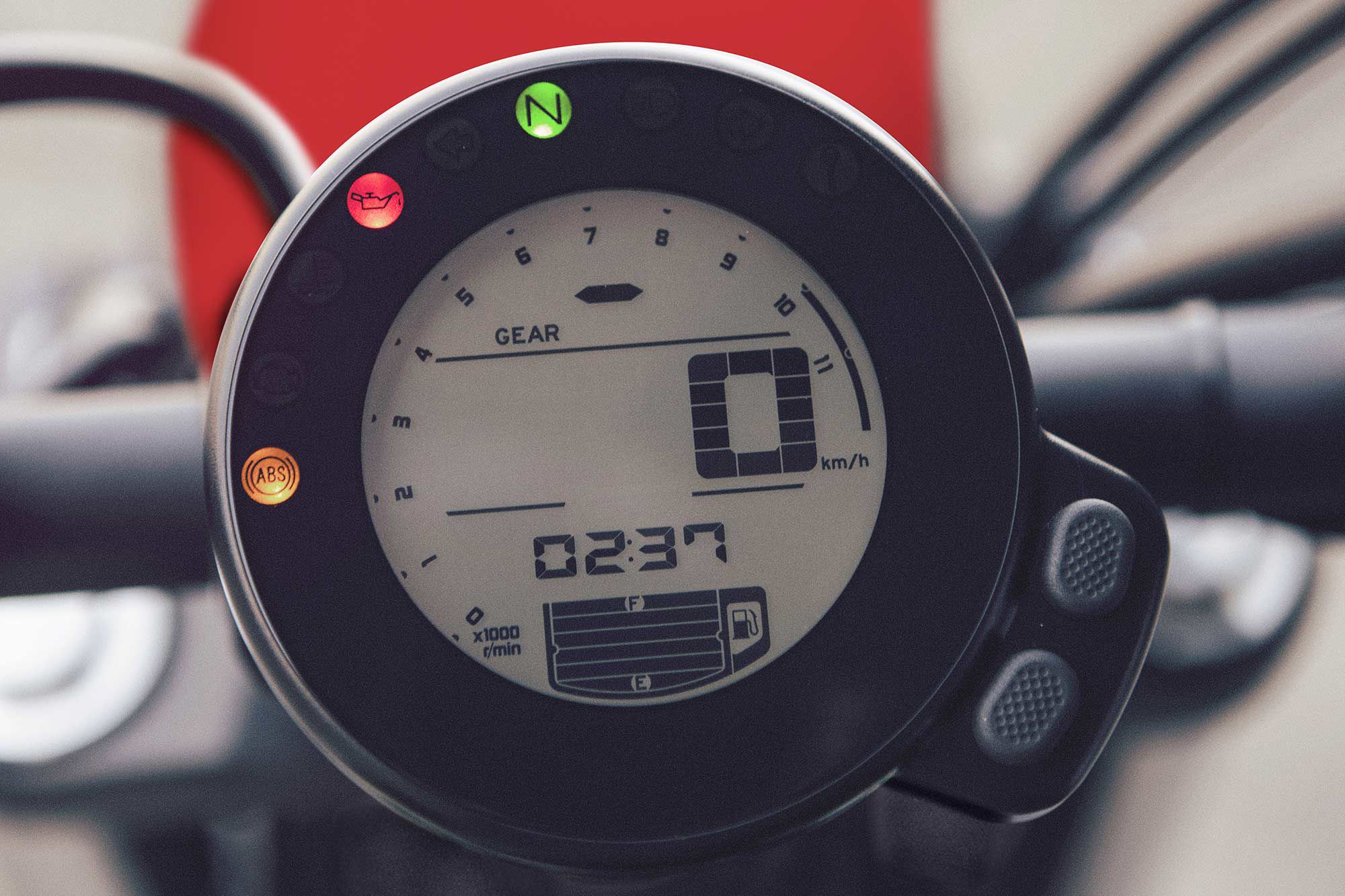
Electronics
Other than the standard ABS, the XSR700 has no electronic rider aids. The round instrument unit made to look like a classic speedometer is actually a circular LCD panel that provides all pertinent info.
Warranty and Maintenance Coverage
The Yamaha XSR700 comes with Yamaha’s one-year limited warranty, with extended warranty and benefits available through Yamaha Extended Service.
Quality
The XSR700′s fit and finish is excellent, and the build quality garners similar praise, especially for a bike in this price range.
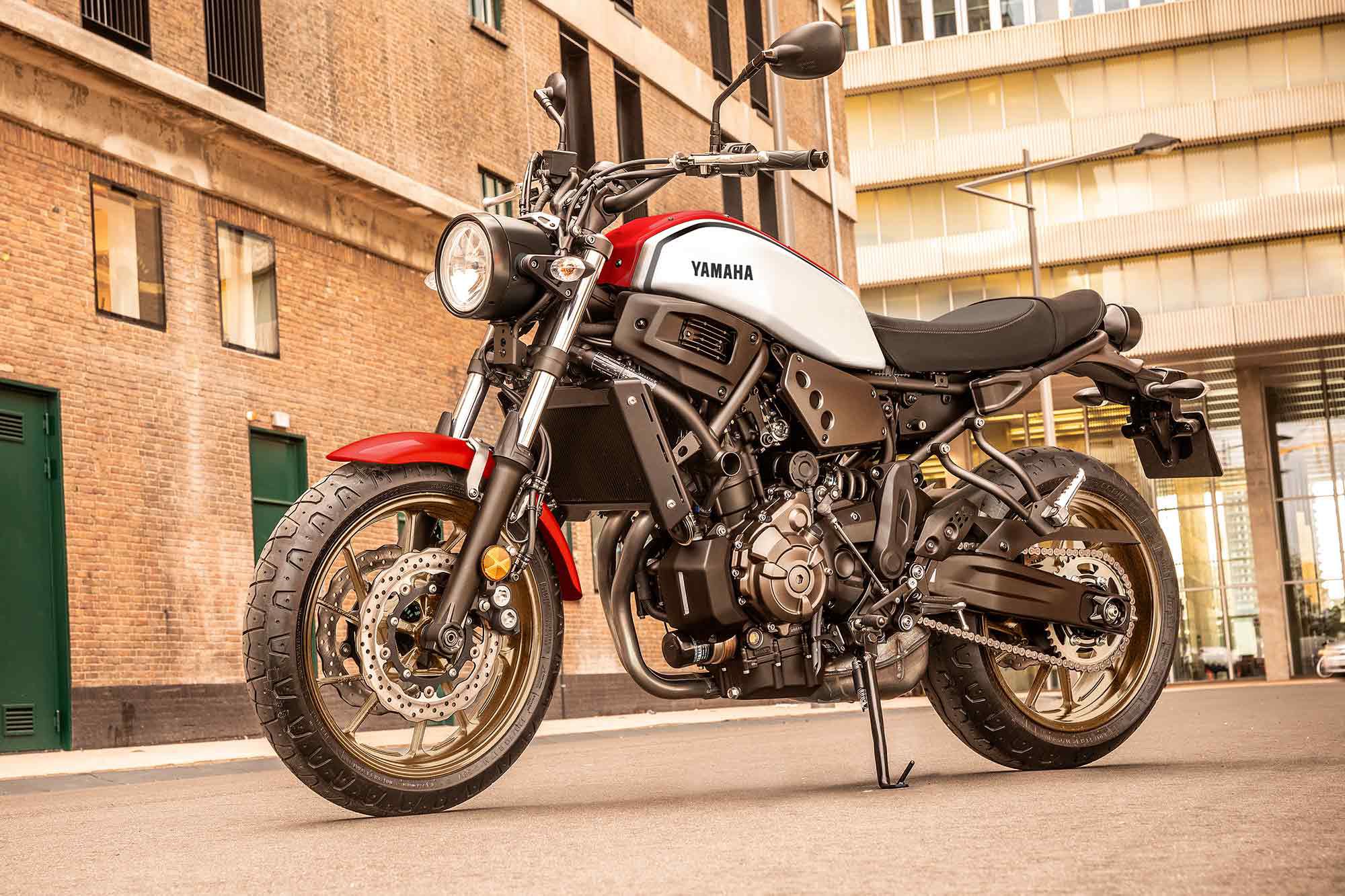
2021 Yamaha XSR700 Claimed Specifications
| MSRP: | $8,499 |
| Engine: | 689cc, DOHC, liquid-cooled parallel twin; 8 valves |
| Bore x Stroke: | 80.0 x 68.6mm |
| Transmission/Final Drive: | 6-speed/chain |
| Fuel Delivery: | Electronic fuel injection w/ 38mm throttle bodies |
| Clutch: | Wet, multiple disc; cable operation |
| Engine Management/Ignition: | Transistorized ignition w/ electronic advance |
| Frame: | Diamond-type steel-tube chassis |
| Front Suspension: | 41mm KYB conventional fork, nonadjustable; 5.1 in. travel |
| Rear Suspension: | KYB shock, spring preload adjustable; 5.1 in. travel |
| Front Brake: | 4-piston Advics Monoblock caliper, dual 282mm discs w/ ABS |
| Rear Brake: | 1-piston slide-pin caliper, 245mm disc w/ ABS |
| Wheels, Front/Rear: | Cast aluminum; 17 x 3.50 in. / 17 x 5.50 in. |
| Tires, Front/Rear: | 120/70ZR-17 / 180/55ZR-17 |
| Rake/Trail: | 25.0°/3.5 in. |
| Wheelbase: | 55.3 in. |
| Ground Clearance: | 5.5 in. |
| Seat Height: | 32.9 in. |
| Fuel Capacity: | 3.7 gal. |
| Wet Weight | 410 lb. |
| Contact: | yamaha-motor.com |
Cycle World Tested Specifications
| Seat Height: | N/A |
| Wet Weight: | N/A |
| Rear-Wheel Horsepower: | 67.91 hp @ 8,790 rpm |
| Rear-Wheel Torque: | 47.47 lb.-ft. @ 6,490 rpm |
| 0–60 mph: | N/A |
| 1/4-mile: | N/A |
| Braking 30–0 mph: | N/A |
| Braking 60–0 mph: | N/A |
Source: MotorCyclistOnline.com
